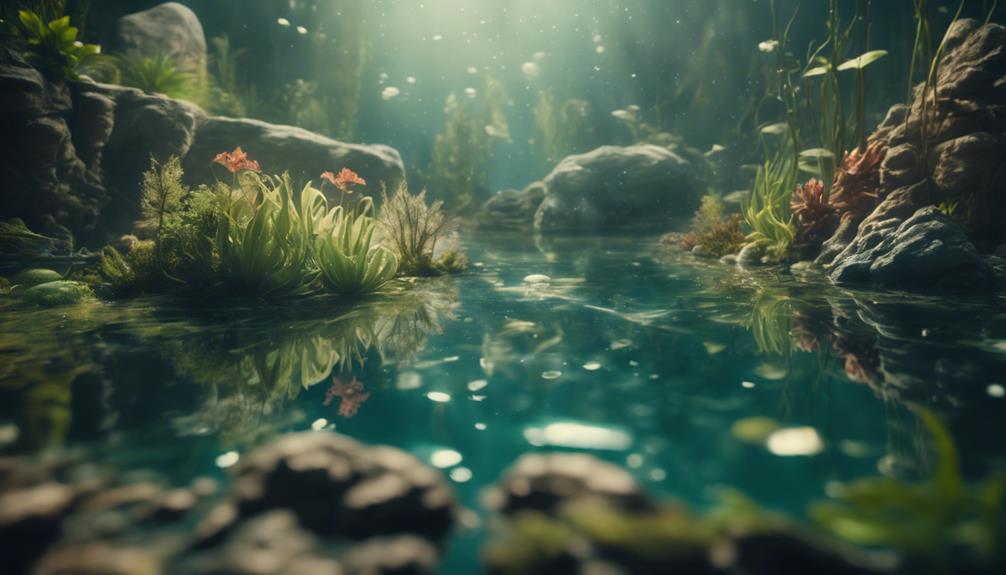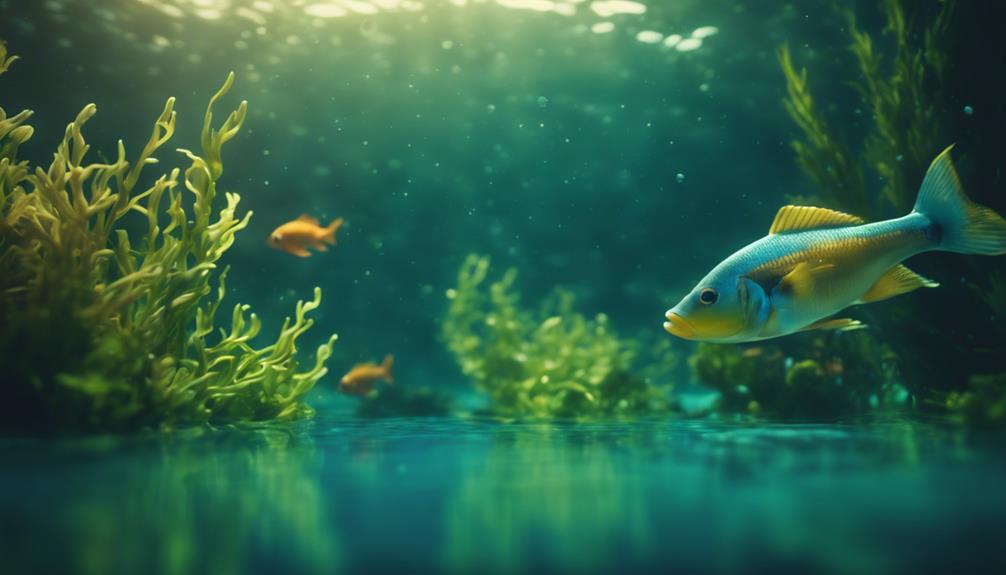You can improve water quality and support thriving plant life by incorporating three key strategies into your landscaping. First, design effective rain gardens that capture and filter stormwater runoff, improving water quality and groundwater recharge. Next, select water-loving plant species that absorb excess nutrients and pollutants from water bodies. Finally, maintain a healthy ecosystem through regular maintenance, such as weeding and mulching, and retaining a buffer zone around waterways. By implementing these strategies, you'll not only improve water quality but also support local biodiversity, and there's more to explore on how to maximize their impact.
Table of Contents
Key Takeaways
- Position rain gardens at least 10 feet away from the house to ensure proper water flow and filtration, improving water quality.
- Plant native species like golden canna lilies, bald cypress, and eel-grass that thrive in wet conditions and can tolerate fluctuating water levels.
- Regular maintenance, including weeding and mulching, promotes healthy plant growth and prevents competition for water and nutrients in rain gardens.
- Installing rain gardens reduces stormwater runoff, capturing and filtering stormwater before it runs off into storm drains and improving water quality.
- Retaining a 10-15 foot buffer zone around waterways and planting native plants within this zone absorbs excess nutrients and limits pollutant entry into water bodies.
Designing Effective Rain Gardens
When designing an effective rain garden, start by positioning it about one-third the size of your roof area and at least 10 feet away from your house, ensuring proper water flow and filtration.
This distance allows stormwater to flow freely into the garden, reducing water runoff and the burden on treatment plants.
Next, dig a depression 6-8 inches deep and 10-15 feet long and wide, with sloping sides towards the center.
This design enables water to collect and infiltrate the soil, improving water quality and groundwater recharge.
Native plants, such as wetland plants, will thrive in this environment, helping to filter stormwater and reduce pollution.
Add a 3-inch layer of untreated shredded hardwood mulch around the plants to enhance water retention and filtration.
Selecting Water-Loving Plant Species
To guarantee your rain garden effectively filters stormwater and supports local ecosystems, you'll need to select plant species that thrive in wet conditions and can tolerate fluctuating water levels. By choosing the right plants, you'll improve water quality and create a habitat for wildlife.
Four types of water-loving plant species are worth exploring:
- Edge plants: Golden canna lilies, button bush, and elderberry are perfect for areas closer to the water's edge, as they can filter excess nutrients from stormwater runoff.
- Trees: Bald cypress, pond cypress, and sweet gum are effective at absorbing excess nutrients and pollutants from water bodies, making them ideal for planting near waterways.
- Emergent plants: Arrowheads, pickerelweed, and giant bulrush can get their 'feet' wet and are perfect for areas with fluctuating water levels, as they help to slow down stormwater runoff and filter out pollutants.
- Submersed plants: Eel-grass can be found in water bodies and are beneficial for improving water quality, as they provide habitat for aquatic life and help to reduce algal blooms.
Maintaining a Healthy Ecosystem

You can play a crucial role in maintaining a healthy ecosystem by ensuring your rain garden is well-maintained, as this will help support local biodiversity and improve water quality.
Regular maintenance, including weeding and mulching, promotes healthy plant growth and prevents competition for water and nutrients.
By planting native plants in and around waterways, you can absorb excess nutrients and limit pollutant entry into water bodies, which in turn improves water quality.
Retaining a 10-15 foot buffer zone around waterways and planting native plants within this zone also helps to improve water quality.
Additionally, installing rain gardens can reduce stormwater runoff, capturing and filtering stormwater before it runs off into storm drains.
By taking these steps, you can reduce pollution and improve water quality, contributing to a healthy ecosystem.
Frequently Asked Questions
What Are 5 Actions We Can Do to Improve Water Quality?
You can improve water quality by conducting regular water testing, ensuring proper sewer maintenance, reducing waste, participating in river cleanup events, and supporting ocean conservation efforts to prevent pollution and contamination.
What Are 5 Ways Trees Improve Water Quality?
"As you plant trees, remember 'many a mickle makes a muckle,' and indeed, tree roots enhance water filtration, preventing soil erosion, while also supporting urban planning, flood control, climate regulation, and biodiversity hotspots through forest hydrology and watershed management."
How Do Plants Improve Water Quality?
As you explore the role of plants in water quality improvement, you'll discover they're natural filters, using phyto remediation to absorb pollutants through root systems, while promoting water filtration, nutrient uptake, and microbe interactions, ultimately enhancing aquatic habitats and oxygen production.
How Do Farmers Improve Water Quality?
You can improve water quality by adopting farm management strategies like soil conservation, crop rotation, and efficient irrigation systems, while also conducting regular water testing, implementing water recycling, and practicing water conservation to minimize environmental impact.
Conclusion
You've managed to create a haven for water-loving plants, and in doing so, have ironically contributed to the very problem you're trying to solve – water pollution.
But don't worry, it's not a vicious cycle. By designing effective rain gardens, selecting the right plant species, and maintaining a healthy ecosystem, you've taken the first steps in improving water quality.
Now, take pride in knowing that your efforts will have a ripple effect, quite literally, and make a real difference in preserving our planet's most precious resource.

